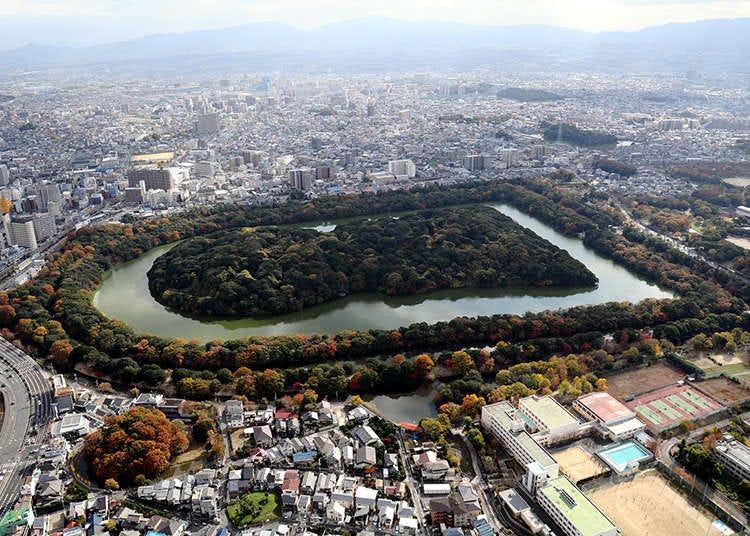
Kofun (ancient burial mounds) are tombs that those in power such as emperors, empresses, baronial families and chiefs of local villages used to build from the 3rd century to the 7th century. Many ancient burial mounds are left in all over Japan particularly in Kansai region.
The History
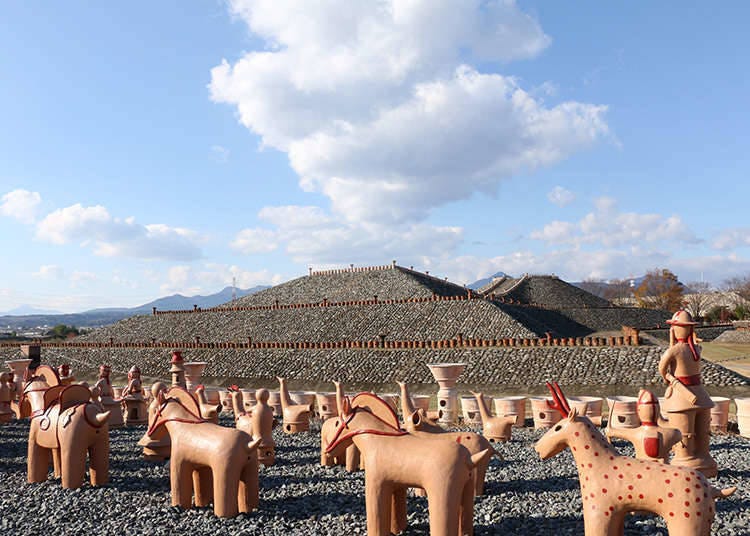
Many kofun were built in Japan from the second half of the 3rd century to the 4th century. Back then, Japan was not unified and people in power called "gozoku" (powerful family or clan) from various areas were competing one another in a power struggle. Each gozoku built a large ancient tomb to show off their authority. Later on the burying method changed from burial to cremation due to the rise of Buddism along with the change of regime, which caused the cessation of kofun in the end of 7th century.. The period from the 3rd to the 6th century when many kofun were built is named the "Kofun period" (250 AD- 538 AD), after these burial mounds.
Burial Goods
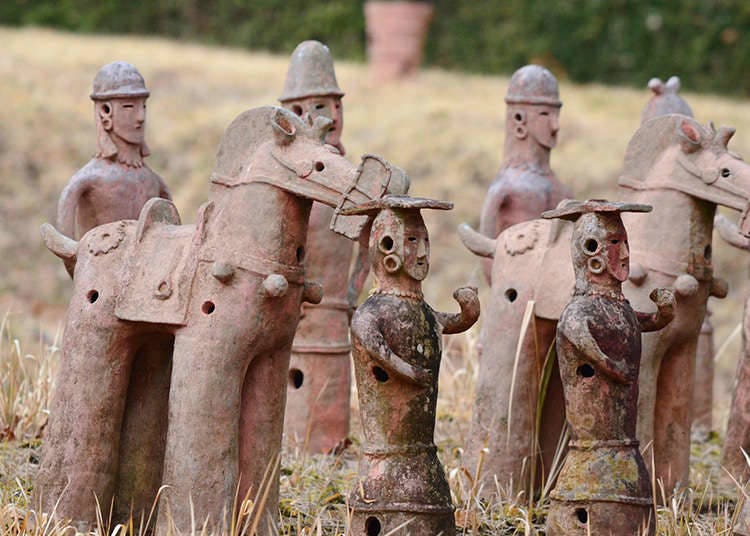
Many ornaments were buried inside kofun. Typical ornaments were copper mirrors, arms like swords and armour and earthenware ornaments. Haniwa (terracotta clay figures) with shapes of humans and horses and cylindrical shaped earthenware were also buried together. The more grave goods there were, the more powerful the person was considered to be.
The Sizes
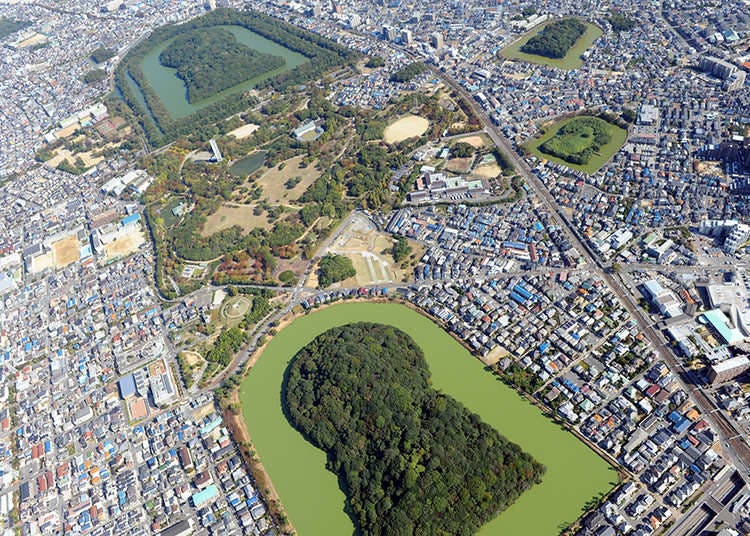
The biggest kofun in Japan is Daisenryo Kofun (Emperor Nintoku's kofun) located in Sakai city in Osaka, the area is 470 thousand square meters including the moat. The second and third biggest kofun are also located in Osaka, which shows that many powerful families used to live in the Kansai region.
The Shapes

A famous shape among kofun is circular-shaped in the rear with a rectangular front. It looks like a keyhole. Daisenryo Kofun (Emperor Nintoku's tomb), the biggest ancient tomb, also has this shape. Other shapes are circular-shapes, rectangular shapes, octagonal shapes and carriage shapes.
Necessary Labor to Build Kofun
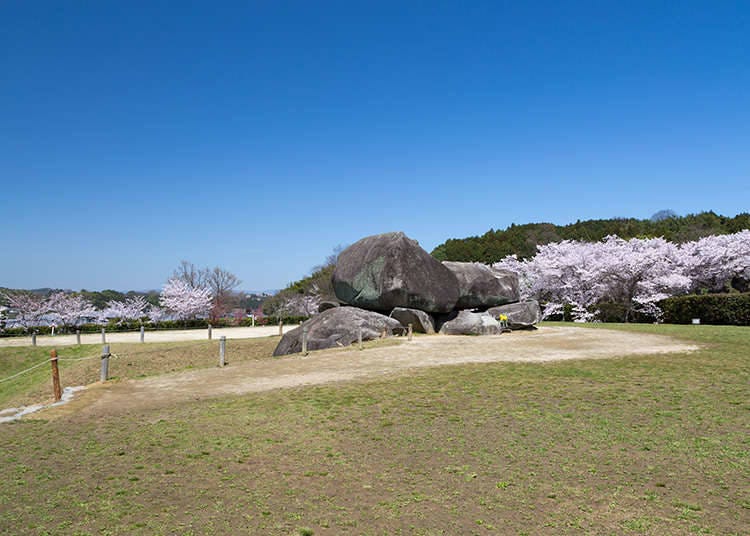
In order to build the Daisenryo kofun, the biggest tomb, it is said that 2,000 people had to work for 8 hours every day and it required 16 years to finish building. In old days wooden-made and iron-made suki (Japanese spades) were used during the work. And the total cost is said to be the equivalent of 80 billion Japanese yen (around 700 million US dollar) today .
Number of kofun
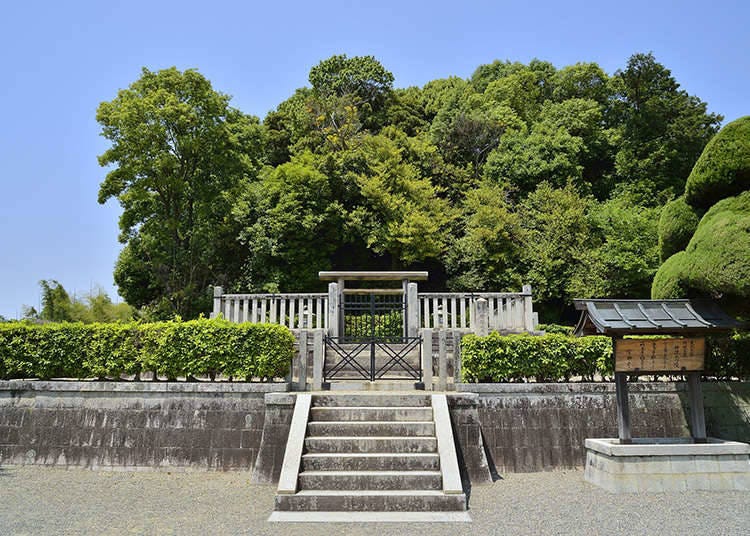
The highest number of kofun is in Hyogo, where there are 16,577 tombs. Next is Chiba, Tottori, Fukuoka and Kyoto. All over Japan, there are still 161,560 kofun left.
*Prices and options mentioned are subject to change.
*Unless stated otherwise, all prices include tax.
Popular Tours & Activitiess
Recommended places for you
-

Kambei Sannomiyahonten
Yakiniku
Kobe, Sannomiya, Kitano
-
Appealing

Rukku and Uohei
Izakaya
Sapporo / Chitose
-
Goods
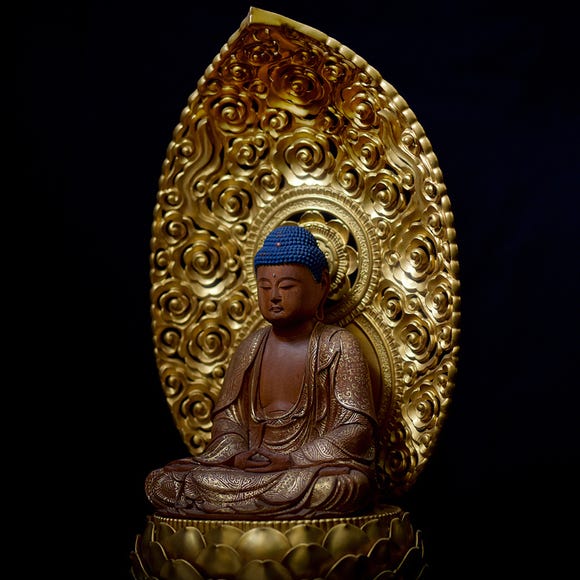
Yoshida Gennojo-Roho Kyoto Buddhist Altars
Gift Shops
Nijo Castle, Kyoto Imperial Palace
-

Kanzenkoshitsuyakinikutabehodai Gyugyu Paradise Sannomiya
Yakiniku
Kobe, Sannomiya, Kitano
-

Jukuseiniku-to Namamottsuarera Nikubaru Italian Nikutaria Sannomiya
Izakaya
Kobe, Sannomiya, Kitano
-

ISHIDAYA Hanare
Yakiniku
Kobe, Sannomiya, Kitano
-
Ad

Complete Guide to Ueno's National Museum of Nature and Science, the Perfect Place to Visit on Rainy Days or With Children
-

First Japan Cherry Blossom 2026 Forecast Announced! Here's When & Where to See Sakura in Japan
-

Jujutsu Kaisen Takes Over JR East With a Wrapped Shinkansen This Winter
by: Guest Contributor
-

This Winter, Godzilla Takes Over Haneda Airport
by: Guest Contributor
-

How to Get Don Quijote's Exclusive 2025-2026 Winter Gift (+Tax-Free Savings)
-

Strawberries, Style, and Tokyo’s Coolest Neighborhood: Winter Afternoon Tea in Kichijoji
by: Guest Contributor
-

A Visit to the Aoyama Cemetery
by: Holly Neslusan
-

Visiting Japan's Miffy Cafe Will Make Your Heart Melt (Photos)
-

20 Best Things to Do in Fukushima Prefecture (Sightseeing Attractions, Local Foods & Activities)
-

Universal Studios Japan: Guide to Osaka's Giant Theme Park Attractions!
by: WESTPLAN
-

Popular Food at Universal Studios Japan
by: WESTPLAN
-

Akita Bucket List: 20 Best Things to Do in Akita Prefecture For Tourists (Attractions, Local Foods & Activities)
- #best sushi japan
- #what to do in odaiba
- #what to bring to japan
- #new years in tokyo
- #best ramen japan
- #what to buy in ameyoko
- #japanese nail trends
- #things to do japan
- #onsen tattoo friendly tokyo
- #daiso
- #best coffee japan
- #best japanese soft drinks
- #best yakiniku japan
- #japanese fashion culture
- #japanese convenience store snacks












